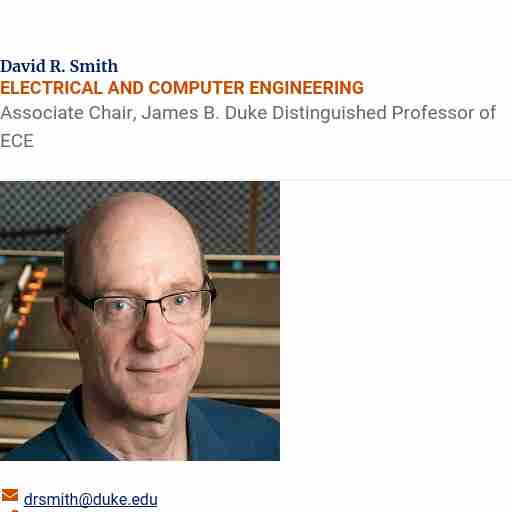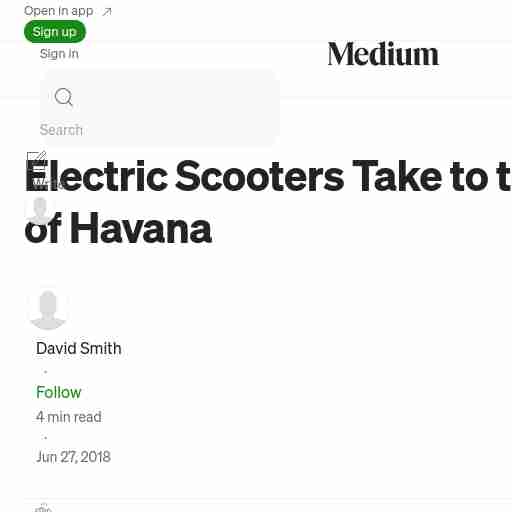When it comes to electrical services for your home or business, you want a company that is reliable, experienced, and trustworthy. David Smith Electric has been providing top-notch electrical services in the industry for over 20 years. With a team of skilled and licensed electricians, we are committed to delivering high-quality workmanship, exceptional customer service, and competitive pricing.
We offer a wide range of electrical services for both residential and commercial properties. Our services include:
No matter what your electrical needs are, we have the expertise to get the job done right the first time. We use only high-quality materials and equipment to ensure that all our work meets the highest industry standards.
Choosing an electrical contractor can be a daunting task, but with David Smith Electric, you can rest assured that you are getting the best possible service. Here are some reasons why you should choose us:
At David Smith Electric, we follow a simple and effective process to ensure that our clients receive the best possible service. Our process includes:
We provide electrical services in all suburbs of Sydney, including the Eastern Suburbs, Inner West, North Shore, Northern Beaches, Sutherland Shire, and Western Sydney.
Yes, we offer emergency electrical services 24/7. Call us on [insert phone number] for assistance.
The cost of our services varies depending on your specific electrical needs. Contact us today for a free quote.
If you're looking for reliable and experienced electrical contractors in Sydney, look no further than David Smith Electric. With over two decades of experience in the industry, we have built a reputation for delivering high-quality workmanship and exceptional customer service. Contact us today for all your electrical needs.

He is also Director of the Center for Metamaterials and Integrated Plasmonics at Duke and holds the positions of Adjunct Associate Professor in the Physics ... ELECTRICAL AND COMPUTER ENGINEERING Associate Chair, James B. Duke Distinguished Professor of ECE Theory, simulation and demonstration of novel electromagnetic metamaterials across the spectrum, from microwave through optical. Applications of metamaterials for antennas and imaging devices, with a focus on security imaging and satellite imaging. General studies on advanced metamaterials and plasmonics, including nonlinear optics, enhanced spontaneous emission, negative refraction, transformation optics, electromagnetic cloaking, and many other topics Dr. David R. Smith is currently the James B. Duke Professor of Electrical and Computer Engineering Department at Duke University. He is also Director of the Center for Metamaterials and Integrated Plasmonics at Duke and holds the positions of Adjunct Associate Professor in the Physics Department at the University of California, San Diego, and Visiting Professor of Physics at Imperial College, London. Dr. Smith received his Ph.D. in 1994 in Physics from the University of California, San Diego (UCSD). Dr. Smith's research interests include the theory, simulation and characterization of unique electromagnetic structures, including photonic crystals and metamaterials. Smith is best known for his theoretical and experimental work on electromagnetic metamaterials. Metamaterials are artificially structured materials, whose electromagnetic properties can be tailored and tuned in ways not easily accomplished with conventional materials. Smith has been at the forefront in the development of numerical methods to design and characterize metamaterials, and has also provided many of the key experiments that have helped to illustrate the potential that metamaterials offer. Smith and his colleagues at UCSD demonstrated the first left-handed (or negative index) metamaterial at microwave frequencies in 2000--a material that had been predicted theoretically more than thirty years prior by Russian physicist Victor Veselago. No naturally occurring material or compound with a negative index-of-refraction had ever been reported until this experiment. In 2001, Smith and colleagues followed up with a second experiment confirming one of Veselago's key conjectures: the 'reversal' of Snell's law. These two papers--the first published in Physical Review Letters and the second in Science--generated enormous interest throughout the community in the possibility of metamaterials to extend and augment the properties of conventional materials. Both papers have now been cited more than 3,000 times each.

David F. Smith Electrical, Panama City, Florida. 35 likes. David F Smith Electrical offers full all around electrical work with integrity, professional... You're using a browser that isn't supported by Facebook, so we've redirected you to a simpler version to give you the best experience. Other ways that you can control your information Manage your ad experience in Accounts Centre More information about online advertising

David R. Smith is currently the James B. Duke Professor of Electrical and Computer Engineering Department at Duke University. He is also Director of the Center ... James B. Duke Distinguished Professor of Electrical and Computer Engineering Electrical and Computer Engineering Box 90291, Durham, NC 27708-0291 2527 CIEMAS Building, Durham, NC 27708 Current Appointments & Affiliations Previous Appointments & Affiliations Dr. David R. Smith is currently the James B. Duke Professor of Electrical and Computer Engineering Department at Duke University. He is also Director of the Center for Metamaterials and Integrated Plasmonics at Duke and holds the positions of Adjunct Associate Professor in the Physics Department at the University of California, San Diego, and Visiting Professor of Physics at Imperial College, London. Dr. Smith received his Ph.D. in 1994 in Physics from the University of California, San Diego (UCSD). Dr. Smith's research interests include the theory, simulation and characterization of unique electromagnetic structures, including photonic crystals and metamaterials. Smith is best known for his theoretical and experimental work on electromagnetic metamaterials. Metamaterials are artificially structured materials, whose electromagnetic properties can be tailored and tuned in ways not easily accomplished with conventional materials. Smith has been at the forefront in the development of numerical methods to design and characterize metamaterials, and has also provided many of the key experiments that have helped to illustrate the potential that metamaterials offer. Smith and his colleagues at UCSD demonstrated the first left-handed (or negative index) metamaterial at microwave frequencies in 2000--a material that had been predicted theoretically more than thirty years prior by Russian physicist Victor Veselago. No naturally occurring material or compound with a negative index-of-refraction had ever been reported until this experiment. In 2001, Smith and colleagues followed up with a second experiment confirming one of Veselago's key conjectures: the 'reversal' of Snell's law. These two papers--the first published in Physical Review Letters and the second in Science--generated enormous interest throughout the community in the possibility of metamaterials to extend and augment the properties of conventional materials. Both papers have now been cited more than 3,000 times each.

David Smith is the General Manager. He and his wife, Kathy, reside in Pocahontas. Tyler Kirklin represents Area 3 Zone 3. He ... Report Outage Outage Map Pay Now SmartHub The Clay County Electric Cooperative Corporation Board of Directors consists of nine members. The Directors are elected by the members at the Clay County Electric Cooperative Annual Meeting held in the spring of each year. John M. Dalton represents Area 1 Zone 1. He has served on the Board since 1979 and is currently serving as the Board President. Mr. Dalton and his wife, Diana, reside in Pocahontas, Arkansas. Connie Pendergrass represents Area 1 Zone 2. She has served on the Board since 2005 and is currently serving as the Board Secretary/Treasurer. Connie resides in Success with her daughter, Elizabeth. Jerry D. Turner represents Area 2 Zone 1. Mr. Turner has served on the Board since 2003. He and his wife, Linda, reside in Success. Charles Raglin represents Area 1 Zone 3. He has served on the Board since 1985 and is currently serving as Board Vice President. Mr. Raglin resides in Pocahontas. Todd Young represents Area 2 Zone 2. He has served on the Board since 2007. Mr. Young resides in Knobel with his two children, Cole and Marshall. Wade Schimming represents Area 2 Zone 3. He has served on the Board since 2011. Mr. Schimming and his wife, Jana, reside in Peach Orchard with their two children, Audrey and Benjamin. Wade Harris represents Area 3 Zone 1. He was elected to the Board in 2021. Mr. Harris and his wife, Erica, reside in the Crockett area. They have two sons, Nicholas and Cooper. Cary Wilson represents Area 3 Zone 2. He has served on the Board since 2008.

Jun 27, 2018 ... The new scooters retail for 1,261 CUC — the CUC is roughly equivalent to the American dollar. While still an expensive item for many Cubans, it ... Electric Scooters Take to the Streets of Havana My wife and I enjoyed a week in Cuba, exploring the music, food and sights of Havana. We were curious to see if what we had heard was true: every other car that passes you is an American classic from the 30s, 40s or 50s. It was! Some immaculately restored, others “Frankensteined” and looking like they would disintegrate under the beating of the omnipresent potholes. The nicest taxi we got a ride in. Source: David Smith, smithwrites.com As the week went by, I became aware that now and then a scooter would sneak by us. How did they do that? They were electric. They silently crept up the calles and whizzed down the avenidas. They’d regularly pass us by in traffic, typically with two riders on board. It was exciting to see electric mobility weaving itself into the daily traffic in Havana. Most Cubans do not own cars, and depend on buses and shared taxis to get around the cities. Another electric scooter passing us by. Source: David Smith, smithwrites.com Like many EV believers, my attention is typically riveted on new electric cars. For example, I just rode from Portland to Seattle in my friend’s new Tesla 3. My excitement at climbing into the car was exceeded by the quiet, thoughtfully designed experience: windows that slide up to tuck under rain gutters, the simple elegant dash, the all-glass ceiling, the quiet grip on the road, and amusingly quick acceleration. But in Cuba, I was reminded that the future of urban e-mobility rides as much on two wheels as on four, and here’s why: